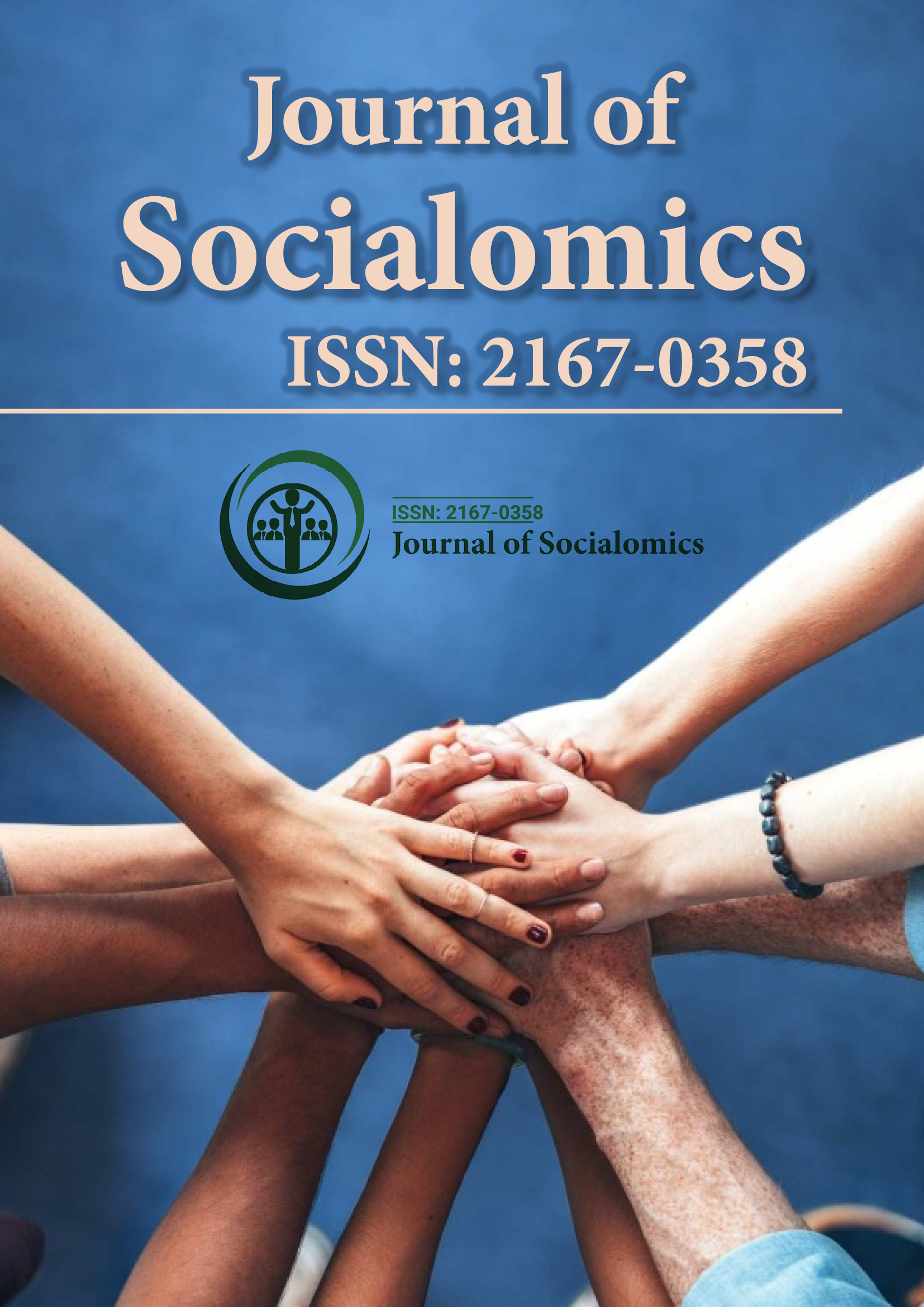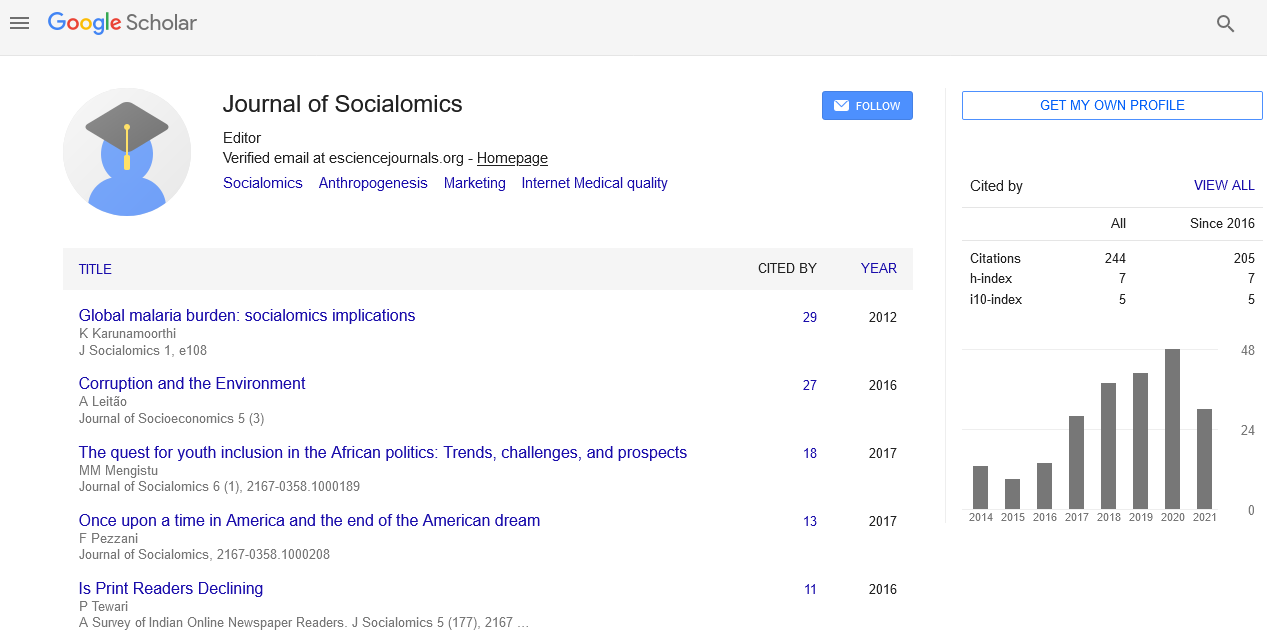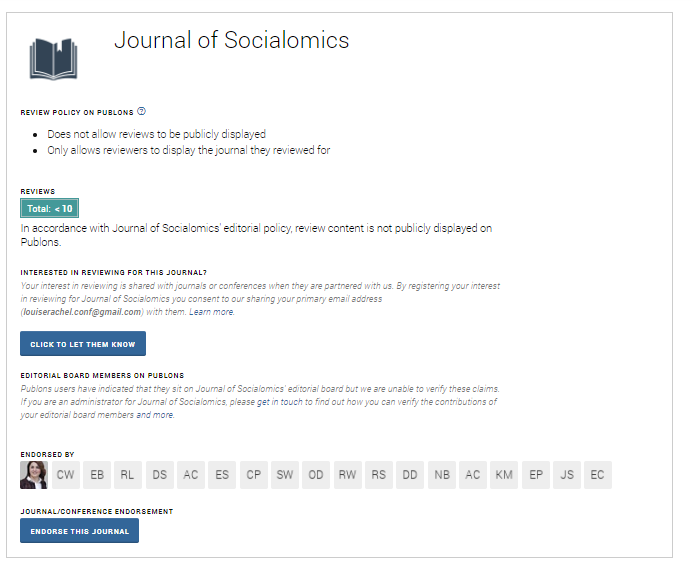Indexed In
- Open J Gate
- Genamics JournalSeek
- SafetyLit
- RefSeek
- Hamdard University
- EBSCO A-Z
- OCLC- WorldCat
- Publons
- Google Scholar
Useful Links
Share This Page
Journal Flyer

Open Access Journals
- Agri and Aquaculture
- Biochemistry
- Bioinformatics & Systems Biology
- Business & Management
- Chemistry
- Clinical Sciences
- Engineering
- Food & Nutrition
- General Science
- Genetics & Molecular Biology
- Immunology & Microbiology
- Medical Sciences
- Neuroscience & Psychology
- Nursing & Health Care
- Pharmaceutical Sciences
Perspective - (2025) Volume 14, Issue 2
Cultural Expression in Crowdsourced Media Platforms
Priya Menon*Received: 26-May-2025, Manuscript No. JSC-25-29731; Editor assigned: 28-May-2025, Pre QC No. JSC-25-29731; Reviewed: 11-Jun-2025, QC No. JSC-25-29731; Revised: 18-Jun-2025, Manuscript No. JSC-25-29731; Published: 25-Jun-2025, DOI: 10.35248/2167-0358.25.14.272
Description
The expansion of crowdsourced content platforms has significantly altered the way cultural narratives are created, shared, and preserved. These platforms allow users from different social and geographic backgrounds to upload, remix, and disseminate various forms of content, ranging from music and video to folklore and oral storytelling. While the internet was once seen primarily as a tool for information access, it now serves as a medium for cultural interaction and production. Crowdsourced platforms, in particular, stand out as arenas where traditional forms of expression collide with newer, rapidly evolving digital aesthetics.
What makes these platforms influential is not just the volume of material uploaded, but how different types of contributors participicipate. Some users act as documentarians, uploading traditional songs, rituals, or stories from their communities. Others serve as interpreters, adapting these cultural forms into memes, animations, or digital art. This duality creates a dialogue between preservation and reinvention, with both roles coexisting, sometimes in harmony and other times in tension. Questions arise about authenticity, representation, and ownership, especially when a cultural element is remixed far beyond its original context.
The communal nature of these platforms invites contributions from both insiders and outsiders of specific cultural groups. This openness can lead to greater exposure for underrepresented traditions, but it can also bring misunderstandings or misrepresentations. In some cases, contributors may borrow elements without fully understanding their significance, leading to conflict or criticism from community members who feel their identity has been reduced to a commodity. While such tensions are not new in cultural exchanges, the speed and visibility of digital platforms amplify their impact.
Monetization has added another layer of complexity. Many contributors now earn revenue based on views, shares, or sponsorships. This can incentivize content creation that emphasizes spectacle over substance. Certain cultural motifs may be exaggerated or stripped of nuance to appeal to broader audiences. As a result, traditional forms may be reshaped in ways that prioritize marketability over meaning. This economic dynamic can create internal debates within communities about what constitutes respectful sharing versus opportunistic replication.
Language also plays a central role in how cultural expression is shaped online. Although many platforms support multiple languages, dominant ones tend to receive more visibility and algorithmic preference. This can marginalize lesser-known languages or dialects, pushing content creators to translate or adapt their work to reach wider audiences. The act of translation, however, is never neutral. Cultural concepts may lose their depth or be reframed entirely, and subtleties that resonate in one context may not survive in another. Yet, some creators use this challenge as a space for experimentation, blending linguistic modes in creative and unexpected ways.
Interactions among users on these platforms reveal ongoing negotiations of meaning and identity. Comments, reposts, and collaborations can reinforce cultural pride, spark learning, or generate conflict. These social interactions contribute to the co construction of meaning, where content is not static but part of an ongoing, collective reinterpretation. Importantly, these exchanges do not always follow the logic of consensus. Disagreements often highlight deeper issues related to power, historical trauma, or social exclusion that digital tools alone cannot resolve.
At the same time, some platforms have begun introducing mechanisms to encourage more responsible cultural sharing. Features like attribution prompts, context tags, and community guidelines attempt to reduce misuse and encourage respect for cultural origin. While such tools are imperfect and sometimes ignored, they signal a growing awareness of the ethical dimensions of digital cultural production. The presence of these features shows that platforms are beginning to grapple with their influence over how cultures are perceived and represented.
Conclusion
The implications of these developments are significant. Crowdsourced platforms are becoming central to the way younger generations interact with culture. For many, they serve as informal archives, education spaces, and creative laboratories. As these digital spaces continue to evolve, they will likely influence how cultural memory is constructed and how traditions are carried forward or modified. The balance between access and responsibility, visibility and accuracy, novelty and respect remains delicate. Observing how different communities navigate these pressures offers insight into the changing nature of cultural participation in the digital age.
Citation: Menon P (2025). Cultural Expression in Crowdsourced Media Platforms. J Socialomics. 14:272.
Copyright: © 2025 Menon P. This is an open-access article distributed under the terms of the Creative Commons Attribution License, which permits unrestricted use, distribution and reproduction in any medium, provided the original author and source are credited


